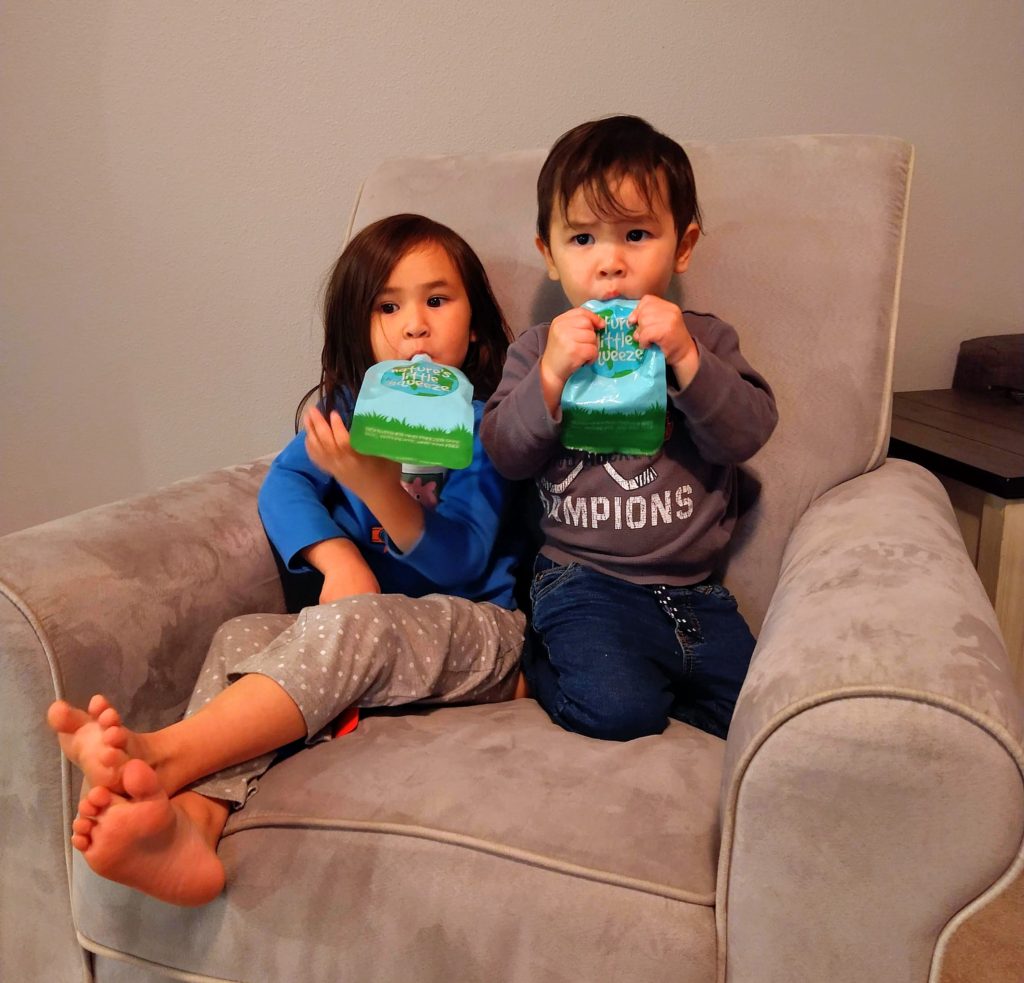Whether your baby is exclusively breastfed, strictly on a formula routine, or somewhere in between, we can all agree that incorporating solids into their diet is a big (and often fun) milestone. With the OK from her pediatrician, my daughter started solid food around six months old. This adventure into a world of new flavors and textures was made even better with Nature’s Little Squeeze reusable pouches.
Even though I was never much into cooking for myself, I decided that I wanted to make all of my daughter’s baby food. Perhaps it was because she was my first child and I had a little more time and energy on my hands. Or, maybe it was the fact that making beginner foods is actually quite simple. Either way, I did it!
Here’s the basic premise of making baby food—assuming you aren’t going the baby-led weaning route, which is a whole different school of thought. You want to start off as smooth as possible (i.e., no choking hazards) and incorporate one specific food at a time in order to quickly triangulate potential allergens. How you get their food cooked, whether it’s baking, steaming, boiling, or any other method, is up to you. I typically opt for steaming if something needs to be cooked, such as vegetables, whereas fruits go straight to the blender. As I grew more confident in my baby-food-making abilities, I would batch-process apples, pears, and carrots, freezing enough for the next week or so worth of food for my daughter to try.
As she grew, trying different types of food like sweet potatoes, baby cereal, and bananas, I began perusing Pinterest for baby food recipes. I started adding spices, creating more complex flavors, and kind of having a great time learning about different food combinations. Since I had never really learned to cook, I found the process both enlightening and, dare I say, fun? Making baby food felt like a safe place to learn the basics and get comfortable experimenting. As an added bonus, I always knew exactly what was in her food.
When the world was in its “normal” state (i.e., pre-COVID-19), my daughter and I were often busy going to playdates, mommy-and-me classes, and family get-togethers. Naturally, my daughter was quickly introduced to pouches. Individually packaged purees are the go-to snack of choice for many busy parents. They’re portable, nutritious, easy to eat, and make for minimal mess. The downside? They’re really difficult to recycle and can create a lot of waste.

In an effort to combine the best of both worlds, I invested in a set of reusable food pouches. Specifically, I went with Nature’s Little Squeeze reusable pouches, as there was no special equipment needed for preparation. The pouches are made of FDA-approved food-safe plastic (specifically PE, PET, and PA) and are BPA-, PVC-, lead-, and phthalate-free. You simply open the strong “zipper” bottom of the pouch to put in food and, later, clean the pouch. Once filled, kids eat from the spout at the top, and each pouch comes with a removable, screw-on lid.
They were an instant hit with my daughter. Everywhere we went, we’d bring along a pouch (or two) of my homemade purees. Making multiple pouches was easy and their design made for painless cleanup: I just used the same kind of brush as for bottle cleaning. There were no leaks, and these reusable pouches are so durable that we’re still using them today (four years later). Some days my daughter would go through multiple pouches, and it’s astounding to think of how much waste that could have created.
Nature’s Little Squeeze reusable pouches come in multiple sizes: 3.4, 5.0, and 7.0 ounces. This has allowed us to “grow” into their uses. We used the smallest option when my daughter was a baby and moved into the five-ounce size during her toddler years. Now that she’s in preschool, we can pack a single smoothie in the seven-ounce size for an easy (and tasty) meal on the go. My son (two years old) is also a fan of purees, so I’ve certainly gotten my money (and then some) out of these reusable pouches over the years.
Making my children’s food, and not creating a thousand little pouches that are difficult to recycle, was a small way I felt I could make a difference in generating less waste. Learning to “cook” in the process was merely the icing on the cake.
